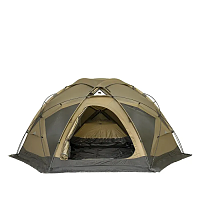Cart
Loadding...
The History and Evolution of Wood Burning Camping Cookers: From Traditional to Modern Designs
Dec 12, 2023
Introduction:
Wood-burning camping cookers have a rich history that spans centuries. These cookers, also known as camp stoves or portable wood stoves, have undergone significant evolution in design and functionality. From traditional and rudimentary constructions to modern, lightweight, and efficient designs, let's explore the fascinating history and evolution of wood-burning camping cookers.
1. Traditional Campfire Cooking:
The earliest form of wood-burning camping cookers can be traced back to ancient times when humans discovered the ability to control fire. Campfire cooking involved building an open fire and using rocks, logs, or simple grills to support cooking vessels. While effective, this method was labor-intensive and lacked efficiency in heat control.
2. Cast Iron Stoves:
In the 18th and 19th centuries, cast iron stoves gained popularity for camping cooking. These stoves featured a compact design with multiple burners and a chimney for smoke ventilation. Cast iron's durability and excellent heat retention made it a preferred choice for camping cookers during this era. However, they were heavy and not easily portable.
3. Portable Box Stoves:
By the late 19th century, portable box stoves emerged as a more convenient option for camping cooking. These stoves consisted of a metal box with a cooking surface on top and a chimney for smoke ventilation. They were designed to be lightweight and collapsible, making them easier to transport. However, they still relied on wood as the primary fuel source.
4. Development of Efficient Designs:
In the mid-20th century, advancements in materials and engineering led to the development of more efficient wood-burning camping cookers. Manufacturers began incorporating features such as adjustable air vents, removable ash pans, and improved insulation to enhance heat control and fuel efficiency. These innovations allowed campers to have better control over the cooking process and reduced the amount of wood required.
5. Introduction of Portable Gas and Liquid Fuel Stoves:
In the latter half of the 20th century, portable camping stoves using gas or liquid fuel gained popularity. These stoves offered convenience, quick ignition, and precise heat control. They became the preferred choice for many campers due to their ease of use and reliability. The availability of compact and lightweight gas canisters or fuel bottles made them highly portable.
6. Return to Wood-Burning Stoves:
In recent years, there has been a resurgence of interest in wood-burning camping cookers. This trend can be attributed to several factors, including a desire for a more sustainable and eco-friendly camping experience, the availability of lightweight and efficient designs, and the romantic appeal of cooking with wood. Modern wood-burning camping cookers feature advanced designs with improved airflow, secondary combustion systems, and lightweight materials like stainless steel or titanium.
7. Integration of Innovative Features:
Today, wood-burning camping cookers come in a variety of designs, including compact foldable stoves, cylindrical rocket stoves, and collapsible box stoves. Many models incorporate innovative features such as heat shields, ash collectors, and removable cooking surfaces. Some even have built-in USB charging ports or water heaters. These advancements make wood-burning camping cookers highly versatile and efficient for outdoor cooking.
Conclusion:
The history and evolution of wood-burning camping cookers have seen a transition from traditional campfire cooking to modern, lightweight, and efficient designs. From the simplicity of open fires to the convenience of gas and liquid fuel stoves, and now the eco-friendly appeal of wood-burning stoves, camping cookers have come a long way. Today's wood-burning camping cookers combine portability, fuel efficiency, and innovative features to provide campers with a sustainable and enjoyable cooking experience in the great outdoors.
- Contact Us
-

About Pomoly
Pomoly is a leading camping brand specializing in hot tents and tent stoves. We are camping life explorer, Follow Page / Join Group, let's make camping enjoyful together!
Working Hours
Mon-Fri, 09:00 - 17:00

- Company Info
- NEWS
- About us
- Pomoly Name
- Leave-No-Trace
- Contact Now
- Facebook Group
- YouTube Learning
- Contact Us
- Topic Collections
- Policies & Terms
- Payment Policy
- Shipping Policy
- Return & Refund
- Privacy Policy
- Terms of Use
- Tax Policy
- Website Disclaimer
- Safety Disclaimer
- Warranty Policy
- Promotion Policy
- Pre-order Policy
- INTELLECTUAL PROPERTY RIGHTS
- Dealers Agreement And Terms
- Become Affiliate
- User Center
- Forget Password
- My Orders
- Tracking Order
- My Account
- Register
- Popular Searches
-
Tipi Tents Dome Tents Camping Tent Hammock Stove Camping Camping Pellet Stove Circle 6 Titanium Water TankDome X Locomotive 20 LEO 2 camping tent T-Brick 2.0 T1 2.0 tent stove Dweller wood stove Oroqen 2.0 Chimney Water Tank Lumberjack STOVEHUT Bromance 70 Tipi Pomoly Coupon Baker Oven Stove Titanium elbow Fire Pits Tent Stove titanium Stove Outdoor Pellet Stove
keebon pellet stove






